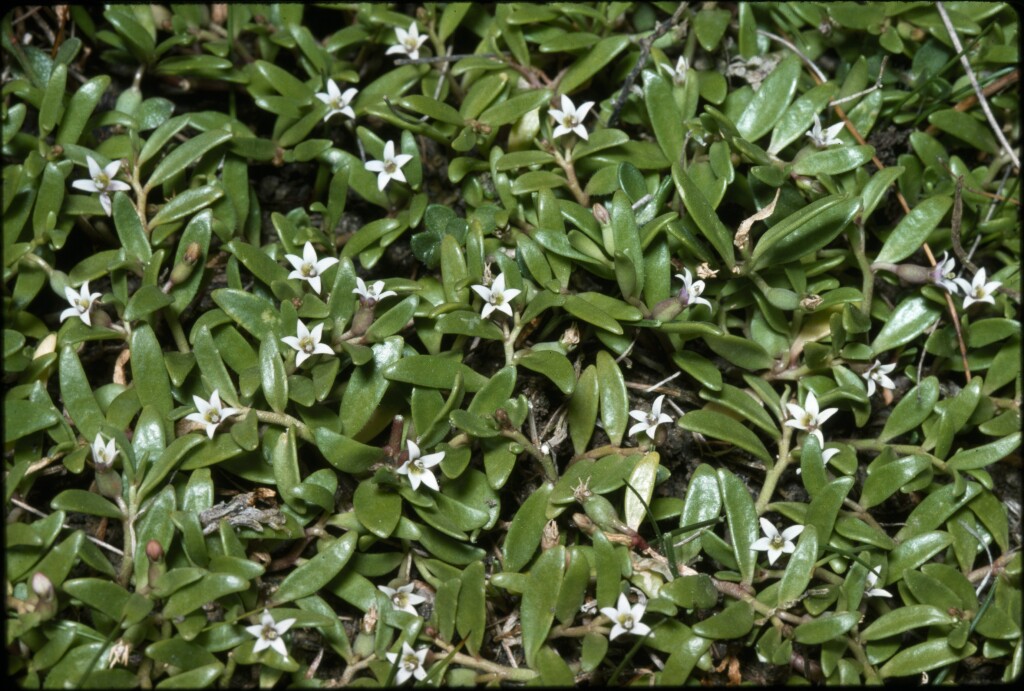Lobelia irrigua
R.Br. Salt PratiaProcumbent or decumbent, nearly glabrous perennial; stems c. zigzagged, rooting at nodes. Leaves distichous, linear to obovate or ovate, or orbicular, 2–40 mm long, 1–8 mm wide, entire or toothed, rather thick, glabrous and lustrous or occasionally minutely pubescent particularly on margins, base tapered gradually; petiole indistinct or absent. Flowers irregularly spaced along stem, male, female and bisexual flowers superficially similar; pedicels 0.5–20 mm long, glabrous. Calyx-lobes 0.4–1.5 mm long, entire; corolla weakly zygomorphic, 1.8–4.5 mm long, white or mauve-tinged on the back of the lobes and tube, lobes subequal, lanceolate to narrowly elliptic, c. 1.3–3.5 mm long, 0.7–1 mm wide, tube c. 0.5–2 mm long, slit to base, glabrous internally or minutely pubescent at very base; filaments 0.8–1 mm long, anther tube 1–1.2 mm long in male and bisexual flowers, seta of lower 2 anthers 0.1–0.3 mm long. Fruit ovoid to ellipsoid or broadly ellipsoid, 5–8 mm long; seeds ellipsoid, compressed, 0.7–0.9 mm long, light brown, reticulate, alveoles c. isodiametric. Flowers Sep.–Apr.; fruits Dec.–Mar.
Wim, GleP, Brid, VVP, GipP, OtP, WaP, CVU, GGr, DunT, WPro, OtR, VAlp. Also SA, Tas. In Victoria occurring principally in coastal areas west of Lakes Entrance, but extending inland across the Volcanic Plains to the Grampians. Restricted to heavy, seasonally damp soils along watercourses, in saltmarsh, slightly brackish to subsaline wetlands and damp grassland.
Lobelia irrigua is extremely variable vegetatively (Albrecht 1992).
Albrecht, D.E.; Walsh, N.G. (1999). Campanulaceae. In: Walsh, N.G.; Entwisle, T.J., Flora of Victoria Vol. 4, Cornaceae to Asteraceae, pp. 553–553. Inkata Press, Melbourne.
 Spinning
Spinning
